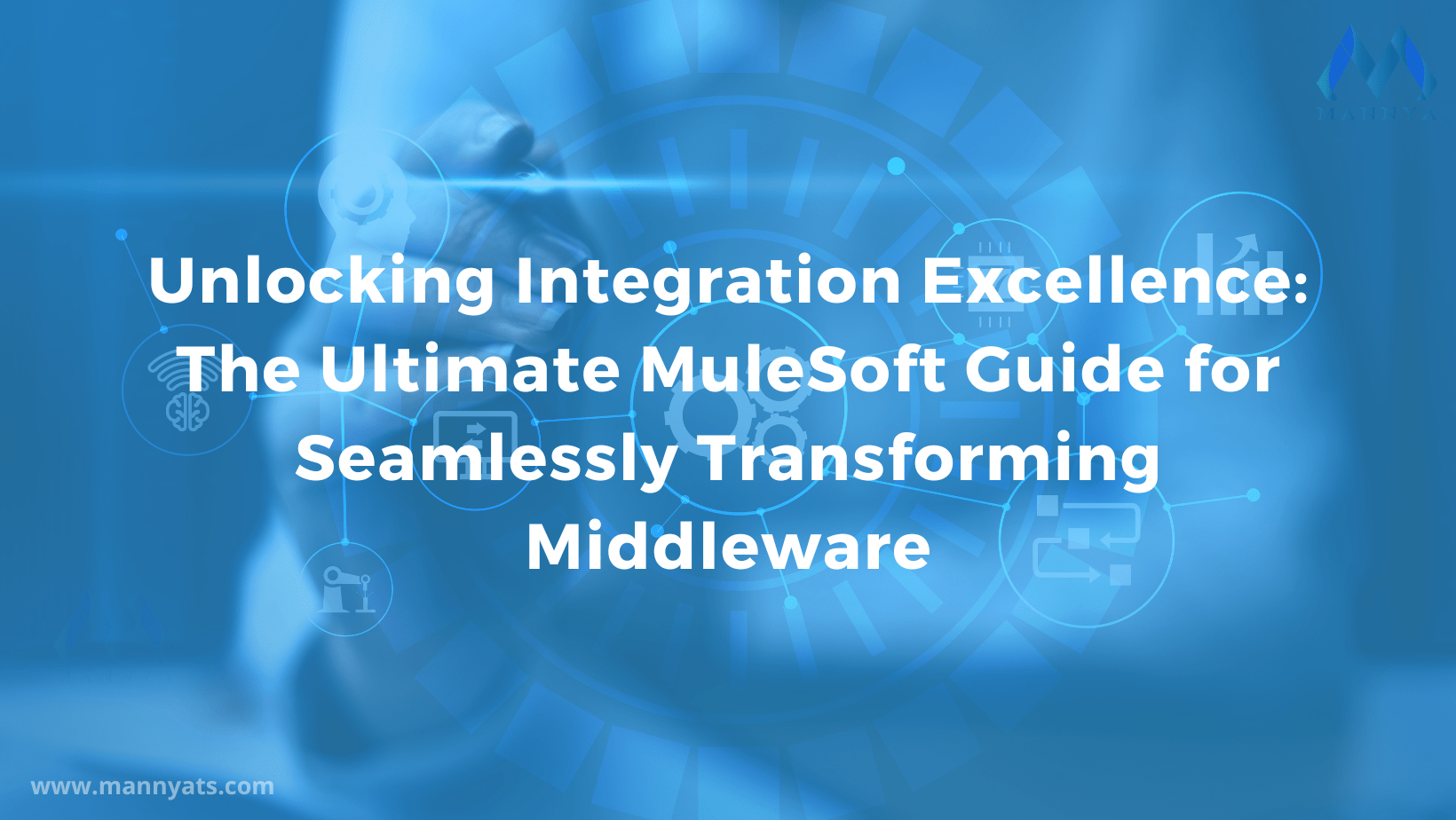Unlocking Integration Excellence: The Ultimate MuleSoft Guide for Seamlessly Transforming Middleware
MuleSoft is an integration platform that enables organizations to connect different systems, applications, and data sources to achieve seamless data exchange and process automation. It provides a comprehensive set of tools and services for building, managing, and integrating applications, APIs, and data across various environments. In this complete guide, we will explore MuleSoft’s product offerings, potential use cases, the best approach to using MuleSoft as a middleware, the effectiveness of MuleSoft for marketing automations, and conclude with a deep understanding of MuleSoft’s significance.

MuleSoft Product
MuleSoft’s primary product is Anypoint Platform, which comprises various components:
- Mule Runtime: The runtime engine that executes Mule applications, enabling the integration of systems and applications.
- Anypoint Studio: An Eclipse-based IDE for designing, developing, and testing Mule applications.
- Anypoint Exchange: A marketplace for discovering and sharing reusable connectors, templates, and APIs.
- API Manager: Allows organizations to create, manage, and secure APIs.
- CloudHub: A cloud-based integration platform as a service (iPaaS) for deploying and managing Mule applications.
- Anypoint Connectors: Pre-built connectors for seamless integration with popular applications, databases, and systems.
- DataWeave: A powerful data transformation language used to convert data formats within Mule applications.
Potential Use Cases of MuleSoft:
- System Integration: MuleSoft enables seamless integration between various systems, applications, and data sources, facilitating smooth data exchange and process automation.
- API Development and Management: With MuleSoft, organizations can create, publish, secure, and manage APIs, allowing them to expose functionalities and data to internal or external stakeholders.
- Data Integration and Synchronization: MuleSoft simplifies data integration by connecting disparate data sources, databases, and applications, ensuring data consistency and synchronization across systems.
- Legacy System Modernization: MuleSoft can bridge the gap between legacy systems and modern applications, enabling organizations to modernize their IT landscape without disrupting existing systems.
- Omnichannel Customer Experience: MuleSoft helps organizations deliver a seamless and connected customer experience by integrating customer data across various channels and touchpoints.
- Cloud Integration: MuleSoft facilitates integration between on-premises systems and cloud-based applications, enabling organizations to leverage the benefits of the cloud while maintaining connectivity with existing systems.
Best Approach to Using MuleSoft as a Middleware:
- Assess Integration Requirements: Understand the integration needs of your organization, including the systems, applications, and data sources that need to be connected or synchronized.
- Design Integration Architecture: Define the integration architecture, including the flow of data, message formats, and protocols. Determine the appropriate use of APIs, connectors, and data transformation.
- Develop Mule Applications: Use Anypoint Studio to design and develop Mule applications based on the defined architecture. Leverage Anypoint Connectors and DataWeave for seamless connectivity and data transformation.
- Secure and Manage APIs: Utilize API Manager to define policies, manage access control, and monitor the performance and usage of your APIs.
- Deploy and Monitor: Deploy your Mule applications on CloudHub or on-premises servers, and monitor their performance, health, and usage using MuleSoft’s monitoring capabilities.
Effectiveness of MuleSoft for Marketing Automations:
MuleSoft can greatly enhance marketing automations by enabling seamless integration and data synchronization between marketing systems, customer relationship management (CRM) platforms, data warehouses, and other marketing tools. With MuleSoft, organizations can achieve real-time data flow, automate lead capture and qualification, personalize marketing campaigns, and gain valuable insights for targeted marketing efforts.
“MuleSoft revolutionizes the way organizations approach integration by providing a comprehensive and unified platform for seamless connectivity. With its extensive product suite, MuleSoft empowers businesses to create application networks, enable data-driven decision-making, and drive digital transformation. By leveraging MuleSoft as a middleware solution, organizations can unlock the full potential of their systems and applications, streamline operations, enhance customer experiences, and gain a competitive edge in the digital landscape.”
In conclusion
MuleSoft’s Anypoint Platform provides a robust and comprehensive solution for integration, API management, and data synchronization. Its capabilities empower organizations to connect and unify systems, applications, and data sources, facilitating seamless data exchange, process automation, and omnichannel customer experiences. By leveraging MuleSoft, organizations can modernize their IT landscapes, streamline operations, and deliver personalized and impactful marketing automations. Embrace MuleSoft’s power and unleash the potential of integration to drive business success in the digital age.
Why Mannya Techno Solutions?
Mannya Techno Solutions is a global IT services firm headquartered in Pleasanton, California and having offshore delivery center in India. Mannya has extensive experience and expertise in CRM, Cloud & Digital Solutions, Oracle and Mobility. We are an associated partner company with Salesforce, AWS, Oracle, and Google and have worked with many leading players in the Manufacturing, E-commerce, Digital, Healthcare, Education, Entertainment/OTT, Hi-Tech and Telecom domains. Mannya provides a portfolio of business and technology consulting services to fully unleash the cloud’s potential. Our competent and talented pool is extensively experienced in delivering vertical-specific solutions.
Share:
Recent Posts
- Optimize Your Salesforce Org With These 7 Critical Insights
- The Martech Revolution A Comprehensive Guide to Unleashing Marketing Technology’s Power
- Unlocking Integration Excellence: The Ultimate MuleSoft Guide for Seamlessly Transforming Middleware
- Salesforce Lightning Web Components (LWC) and Lightning (Aura) Components: A Lightning Transformation
- The Power of Chat GPT and Salesforce Integration A Comprehensive Technical Guide
